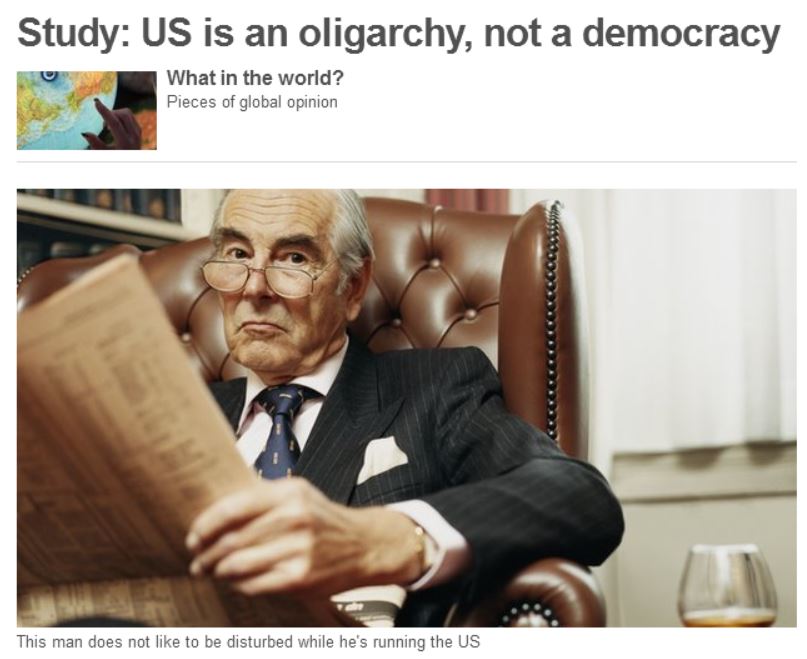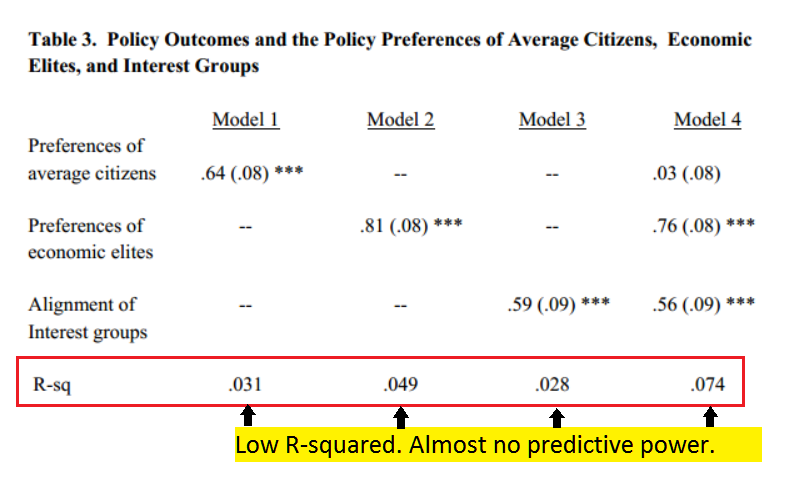Is the US an Oligarchy? Not So Fast.
There’s a new study out which, press outlets are telling me, shows that the United States is now an oligarchy, ruled by the rich and powerful, and perhaps that the US has been sliding in this direction for decades.
You can see coverage of it at The Telegraph, PolicyMic, the BBC, and other places. You can also read the actual paper online: Testing Theories of American Politics: Elites, Interest Groups, and Average Citizens.
The headlines about it are wrong. This study doesn’t demonstrate any such thing.

The BBC’s lovely illustration of the story
I certainly don’t want to see an oligarchy. I’m a fan of representative democracy. I don’t want a world in which wealthy individuals or powerful lobbies run roughshod over individual voters. That’s a continual and ongoing concern for democracy.
This paper, however, demonstrates essentially nothing. The fundamental problem is that the mathematical models in the paper have almost no predictive power of reality.
Specifically: The mathematical model the researchers construct to see how the preferences of ordinary voters, affluent voters, and lobbyists influence the chance of a policy being enacted have an R-squared of 0.07.
What does that mean? Well, an R-squared of 1.0 means perfect fit of your model to the data. It means your mathematical model predicts reality perfectly (at least for the data points you have.)
An R-squared of 0 means (basically) that your model predicts nothing. That it has no better fit to the data than random chance.
What does an R-squared of 0.07 mean? It means the model has almost no predictive value. That it’s just barely better than random chance.
And what is this model trying to predict? Why, it’s trying to predict how the desires of median voters, affluent voters, and various lobbies impact policy. And what it finds is…almost nothing.
That model is the one from which the authors and journalists are drawing their conclusion that the US is now an oligarchy.
Below is the critical table from the paper, including the R-squared values, with my comment.
In fact, this paper fails to find any strong effect of any variable that it looked at on the likelihood of policy being enacted. They mask this a bit by ‘scaling’ all the predictive powers back up to the range of 0-1 in the next table. Perhaps they intended that as a way to more clearly show the size of one factor vs another. But it masks the fact that none of the factors they found had much of any ability to predict which policies were passed.
The authors might have done better looking at more complex variables such as:
– The percent of voters who supported or opposed a policy.
– The total amount of lobbying dollars spent on either side.
– The total amount of advertising dollars spent on either side.
But they didn’t.
This doesn’t mean that the US isn’t an oligarchy or that lobbyists and elites don’t have too much power. We don’t know that from this paper.
All we know is that the paper doesn’t prove much of anything. And that the headlines based on it – while they probably draw a great many clicks – aren’t accurately passing on what the study says.

